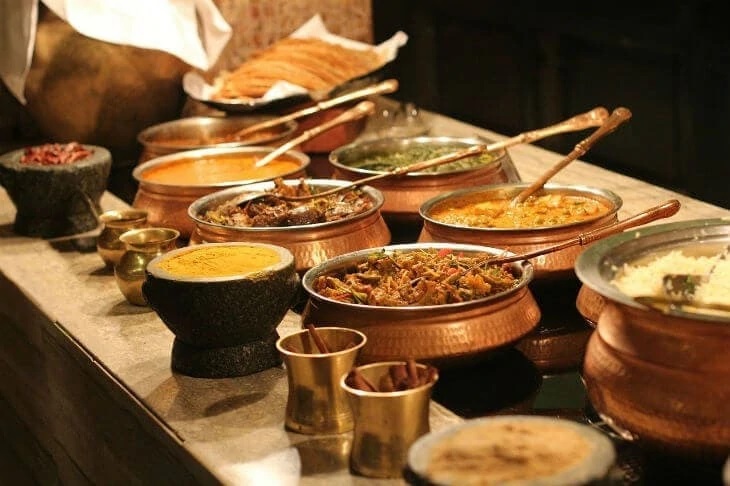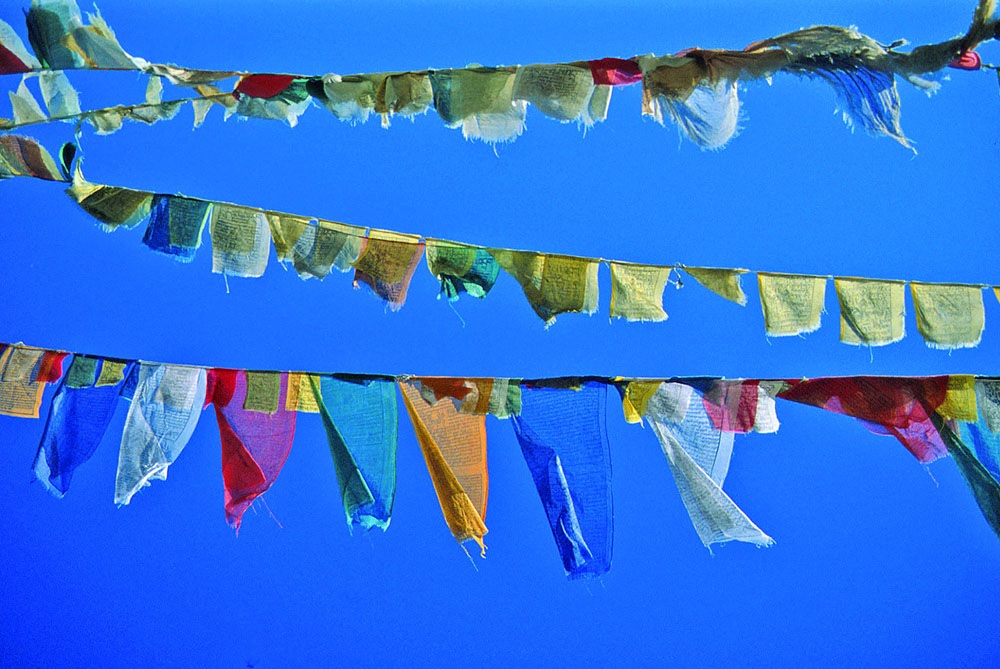What to see in Ladakh – Ladakh Itinerary for 10 Days through the Indian Himalayas
You must visit Ladakh once in your life. Ladakh Itinerary for 10 Days is a remote region in northern India with breathtaking landscapes. Ancient monasteries, temples, and palaces are hidden between mountains and valleys. Follow our route through the Indian Himalayas to discover what to see in Ladakh and enjoy a truly incredible journey.
Its deep valleys crossed by rivers with crystal clear water, the mountains of the Himalayan chain, its lunar and desert landscapes and above all the hospitality of the city inhabitants, make the north an India different from what we are used to. see.
India is a country of 3,287,263 Km² and offers a fascinating variety of contrasts, not only socio-cultural, religious, but also landscape. There is no doubt that North India, and Ladakh in particular, is one of the places that truly attracts you like a magnet.
What to see in Ladakh by Ladakh Itinerary for 10 Days
In Ladakh Itinerary for 10 Days Organizing a trip through Ladakh in the Indian Himalayas is not complicated at all, you can perfectly do it yourself, but there are areas where you need to apply for a permit to access them, and these are the travel agencies that provide it. for you. You can get from one city to another by bus, but of course it takes a lot of time, but the option of renting a car with a driver is a good decision. It is a very popular area for bikers, I think it is because of the feeling of freedom that the Ladakh region provides.
Ladakh was one of the trips that had the most impact on me in India!
I took a fairly early flight from Delhi to Leh, the capital of Leh district, Ladakh. It is advisable to stay a few days in this city, to acclimatize to the altitude of the region, since the city of Leh is located at an altitude of 3,500 m in the Himalayas.
Day 1 and 2. Visit Leh
Leh Main Bazaar
Street with old buildings with shops with mountains in the background.
From the Singge Palace Hotel, we walked to the city center. We immersed ourselves in the ‘Main Bazaar’, the main bazaar of Leh, where the shops, fruit and vegetable stalls on the street, restaurants, bring this city to life.
People with their typical, but not so colorful, costumes attract attention, their faces weathered by the cold and the sun. In one corner of the main bazaar is the main mosque painted white and green.
Leh Palace
Leh Palace is located in the north of the city. You wander through the old town, a veritable labyrinth of narrow streets, which transport you back in time. You have to go very slowly the whole first day, the climb is quite hard because of the altitude. Leh Palace is an imposing 9-story building, a true architectural and technical feat built by the Namgyal dynasty.
Built by King Sengge Namgyal in the 16th century, it is a Tibetan-style building. The different floors were dedicated, one to stables, the other to warehouses, servants, the King’s audience room, the residence of the royal family, etc. On the eighth floor is a room dedicated to the deity Dukkar.
The royal palace lay in ruins for centuries until 1982, when the Archaeological Survey of India named it a “national monument of cultural interest.” From the top floor, there is a spectacular panoramic view of the entire city of Leh.
Chensering Lhakhang Temple
Just below Leh Palace is the Chensering Lhakhang, a 17th century temple, almost always closed.
Shankar Monastery
Shankar Monastery is the residence of the abbot of Spituk. This monastery belongs to the Gelup-pa sect. Only around twenty monks reside here.
Shanti Stupa
This stupa is on two levels, on the lower level it is decorated with 53 images of Buddha and on the upper level there are 4 images representing the cycle of life.
Tsemo Fort and Monastery
Tsemo Fort and Monastery is a complex of chapels and a fort, the tallest building being an ancient Dard fortress part of which dates back to the 5th century. The current structure was built between 1555 and 1575. It can be a little disappointing in its appearance. visit, but the views are spectacular.
Where to eat in Leh
I can definitely recommend the Gesmo restaurant, which I have been to several times, and the Appletree restaurant is also good.
Day 3. West of Leh
From Leh, on the second day we took an excursion to visit the monasteries of Spituk and Phyang. There are buses that take you to these towns and monasteries, but if you rent a car with driver you have the option of including other monasteries in the excursion.
Spituk Monastery
Just 7 km from Leh, Spituk Monastery is one of the oldest monasteries in Ladakh. It is also known as Spituk Gompa, which means “exemplary”.
The place was dedicated in the 11th century and belonged to the Kadam-pa school, in the 15th century it became a place of learning for the Gelug-pa.
Its close ties with Tibet in the 15th century made the monastery an important enclave on the western Tibetan plateau.
Phyang Monastery
Phyang Monastery is located just 18 km west of Leh. Phyang Hill served as the site of a monastery known as Tashi Chozong in 1515. It is said to have been founded by Tashi Namgyal. It belonged to the Kadam-pa school, but 500 years ago it was converted into the Drigung-pa school.
What I had seen so far had fascinated me, but I knew that what I had not yet seen was even more fascinating.
Days 4 and 5. Excursion to Lamayuru
The second excursion we took was to Lamayuru, located 125 km northwest of Leh. The journey does not leave you indifferent, the inhospitable landscapes, the well-paved roads where your vision is lost, the small villages surrounded by vegetation in totally desert areas, the rivers that flow between the mountains, all this makes you feel like the the most insignificant living being. in the face of such greatness.
Gurdwara Pathar Sahib Temple
Along the way, you can stop at the Gurdwara Pathar Sahib temple, built in 1517 to commemorate the visit to the Ladakh region of the founder of the Sikh religion, Guru Nanak Dev. You will probably end up peeling vegetables at the end of the visit, to help with the meal it is offered to the faithful.
Basgo Monastery
Another stop to make is the Magnetic Coast, 4,267 m above sea level, where vehicles defy the force of gravity. You will be able to see for yourself how the car in neutral is able to travel part of the road.
Also where the Indus and Zanskar rivers converge like in the town of Basgo. But the most spectacular stop, and one you will definitely make, is in the Valley of the Moon, where the colors of the sandstone formations range from dark almost black to beige. A whim of nature.
A few kilometers further there is a police station where passport controls are carried out; it is advisable to have a photocopy on hand; These checkpoints are because you are on the road to Kashmir.
Lamayuru Monastery
As you approach Lamayuru it is a more beautiful visual impact, the monastery stands guard on top of a rock and the houses are reminiscent of the Middle Ages, they are built at the bottom of the hill. Lamayuru Monastery: Originally the principal Bon monastery of Ladakh, it is the popular Bon symbol of “eternity”. She is currently affiliated with the Drinkung Kagyu school.
The oldest building is the temple called Sengge Lhakhang (958-1055 AD). The monastery dates back to the 11th century and was declared a sacred place in the 16th century, a place where even criminals could seek refuge. It is one of the largest gompas in Ladakh. His paintings are admirable, but because of the darkness it is almost impossible to take photos without using a flashlight. The monastery is surrounded by stupas and prayer wheels.
Alchi Monastery
After the tour, we headed to Alchi, located halfway between Leh and Lamayuru, where we spent the night.
Alchi is a quiet little town, it was one of the towns I wouldn’t mind spending time in. Of course, it doesn’t have the beauty of Lamayuru, but for me it was very special. I never thought that this small town had such a magnificent temple, for me it was the hidden gem of the Himalayas. From the outside it looks like a run-down, ugly monastery, but it’s a diamond in the rough.
In 1020-1033 AD, the famous translator Rinchen Zangpo visited Ladakh and founded this monastery. Rinchen Zangpo hired many famous artisans from Kashmir and Tibet. The complex is made up of 4 temples: Sumtseg, Dukhang or Vairocana Temple, Lotsawa and Manjushree Temple. Its temples are home to some of the most fascinating Buddhist paintings in all of the Himalayas, mandala paintings that have deep tantric interpretations. Taking photos is completely prohibited, and don’t think it’s easy to take photos with your cell phone, there will always be a monk near you attentive to your movements. It’s a shame, but it’s a question of respect. It was a well-kept gem.
Likir Monastery
On the way back to Leh, I visited Likir Monastery, 52 km west of Leh, located on a hill on the banks of the Indus River. This monastery is called Klukhi because it is believed that Jokpo, the Naga king, slept here.
Two huge serpents embrace the monastery, the spirits of naga-rajas Nanda and Taksako, hence it is commonly known as Likir (surrounded by Nagas).
Its large stature of 23 m tall Maitreya Buddha stands out.
Day 6. East of Leh
Hemis Monastery
Hemis Monastery in Ladakh Itinerary for 10 Days: 45 km southeast of Leh is the largest and most prosperous monastery in central Ladakh, in the Shang Valley, clinging to the foothills of a steep hill. The only way to get there is by taxi, although in summer a bus takes you to the nearest town, Karu.
Its date of construction is not very clear, it is believed to have been in 1644 and it was consecrated in 1664. It is one of the richest monasteries in land holdings, with approximately 2,500 acres divided between Ladakh and Zanskar. The monastery is unique, and very different from other religious buildings in Ladakh.
In the large courtyard, the famous Hemis festival is celebrated on the 10th and 11th of the fifth month of the lunar calendar (May or June) in honor of Padmasambhava (Guru Rinpoche). It has quite an interesting museum, but getting lost in the labyrinth that forms its structure, as in its different temples, is something indescribable.
Thiskey Monastery
Located 19 km south of Leh, Thiskey Monastery is known as “mini Potala”. It is a large complex whose main building painted red and yellow rises majestically above the monks’ quarters. It is located at an altitude of 3600 m above the Indus Valley.
Built in the 16th century, it was the first Gelugpa monastery in Ladakh. The Duhkang is the largest structure on top of the hill, dedicated to the lineage gurus and Rinpoche.
Every year, in the 12th month of the Tibetan calendar, a 3-day festival is celebrated.
Royal Palace of Shey
A fortress built in 1650 by King Deldan Namgyal, in memory of his late father Sengge Namgyal, the royal palace of Shey is today completely in ruins. It’s really a shame. The palace has a Changchup Chorten (Victory Stupa), the top of which is made of pure gold. What’s worth it is the panoramic view from the fortress.
Days 7 and 8. North of Leh in Ladakh Itinerary for 10 Days
Nubra Valley
Nubra Valley is about 155 km from Leh and is located on the ancient Silk Road to Central Asia. Tourists need a permit to access the Nubra Valley, which can be provided by a travel agency. At South Pullo (4663 m above sea level), you pass the police checkpoint. I recommend that you go well dressed. The road is generally in good condition, except in some sections where it becomes a bit tedious due to rain and landslides.
The obligatory stop is the Khardung La pass at 5602 m above sea level. It was so cold it took your breath away, and the altitude is a big problem, especially if you suffer from altitude sickness. Locals and tourists were walking everywhere taking photos. There is a temple in the pass that I didn’t want to climb, if it was already difficult for me to walk I didn’t want to check what it would cost me to climb the temple. Spectacular landscape with head-high clouds.
The next stop was for lunch in the town of Khardungla, where you have the Karakorum mountain range as a backdrop. Only one day a week, a bus leaves from Leh and takes you to the Noubra Valley. I have no words to describe the landscapes, arid and desert, sometimes I thought I was in the Colorado Canyon. You just want to stop every 5 minutes and take photos.
Nubra Dunes
If the landscapes we left behind were magnificent, I don’t know what to say when we approach the Nubra Valley. We follow the course of the Shoyok River, to our right the dunes, and the river which changes color depending on the sunshine.
We head to the town of Hunder, where most of the accommodation is located. We left our suitcases and immediately went for a walk in the dunes which are at an altitude of 3000 m. I couldn’t believe that there could be a sandy desert surrounded by snow-capped mountains. You can ride a camel in this desert. We were late, but this place hooks you, hypnotizes you.
It is interesting to be able to attend a show, where you are offered four types of Shondol dance which come from the Mon tribe.
Days 9 and 10. Pongong Tso
From Nubra Valley to Pangong Tso Lake
I regretted not staying another day in the Nubra Valley, but we had to continue our route. We did part of the journey stopping at Diskit to see the 32m tall statue of Jampa Buddha (Maitreya). Our driver suggested we see Diskit Monastery, but we had already seen many monasteries and had a long way to go to Pangong Tso Lake, about 274 kilometers to be exact.
Later, we took the road to Shyok. The journey is a bit long and here we find a road in less good condition, but the immensity of the landscapes has softened the harsh potholes, most of the journey takes place between the mountains. We had lunch in the town of Tangtse.
Before arriving at the lake I was amazed to see how there were a large number of marmots in the field eating as much as they wanted, plus they are not afraid of human beings and they come close quite close to me.
Pangong Tso Lake
Pangong Tso Lake is located southeast of Leh, 222 km by road. Pangong Tso lies at an altitude of 4250 m, has a length of 134 km and the water is salty. The sky was overcast, threatening rain but sometimes the sun managed to come out and its waters were an exultant turquoise, the mountains that surrounded the lake had their snow-capped peaks.
Accommodations on the lake are mainly tents equipped with bathrooms, with the exception of a few wooden cabins. The beds are spacious and equipped with good blankets, but in the end you end up sleeping with your clothes on. You only have electric light from seven in the afternoon to eleven in the evening. Hot water for showering is provided at 7am in buckets, but it is impossible to shower due to the cold at that time. Due to the altitude it is difficult to walk, you have to do it very calmly. Meals are served in the restaurant corresponding to the tents.Ladakh Itinerary for 10 Days
It rained all night but the sunrise was spectacular, the mountain tops were snowier and the lake water seemed to have a silver color, definitely worth getting up early to see.
The return to Leh is via the Changla Pass which is at an altitude of 5391 m.
Traveling to Ladakh with Ladakh Itinerary for 10 Days – what to keep in mind
There, in almost every city, the sale of alcohol is prohibited, so if you want to drink a beer, you have to look for a store on the outskirts of the city to buy them.
In many places smoking is prohibited, not only in restaurants but also on the street.
It is essential to bring flashlights, both to see some of the monasteries and their magnificent paintings, and because of the continuous power cuts.
Without a doubt, you need to wear warm clothes and if you suffer from altitude sickness you need to take medication. You have to keep in mind that you will always be over 3000 m above sea level.
Ladakh Itinerary for 10 Days By Delighted Journey




